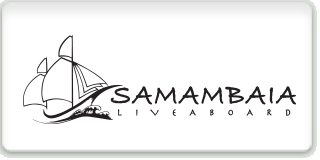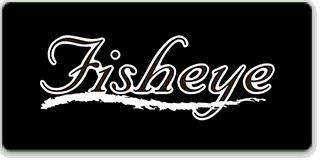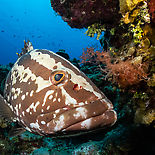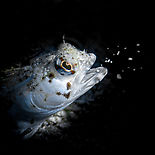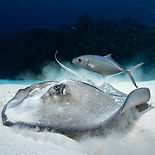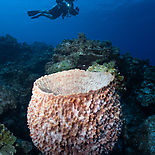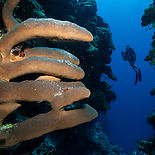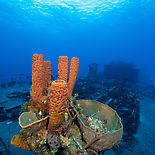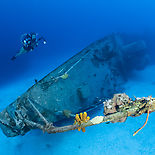GEAR TESTS: OLYMPUS TOUGH TG-6
4K 30p Test Footage
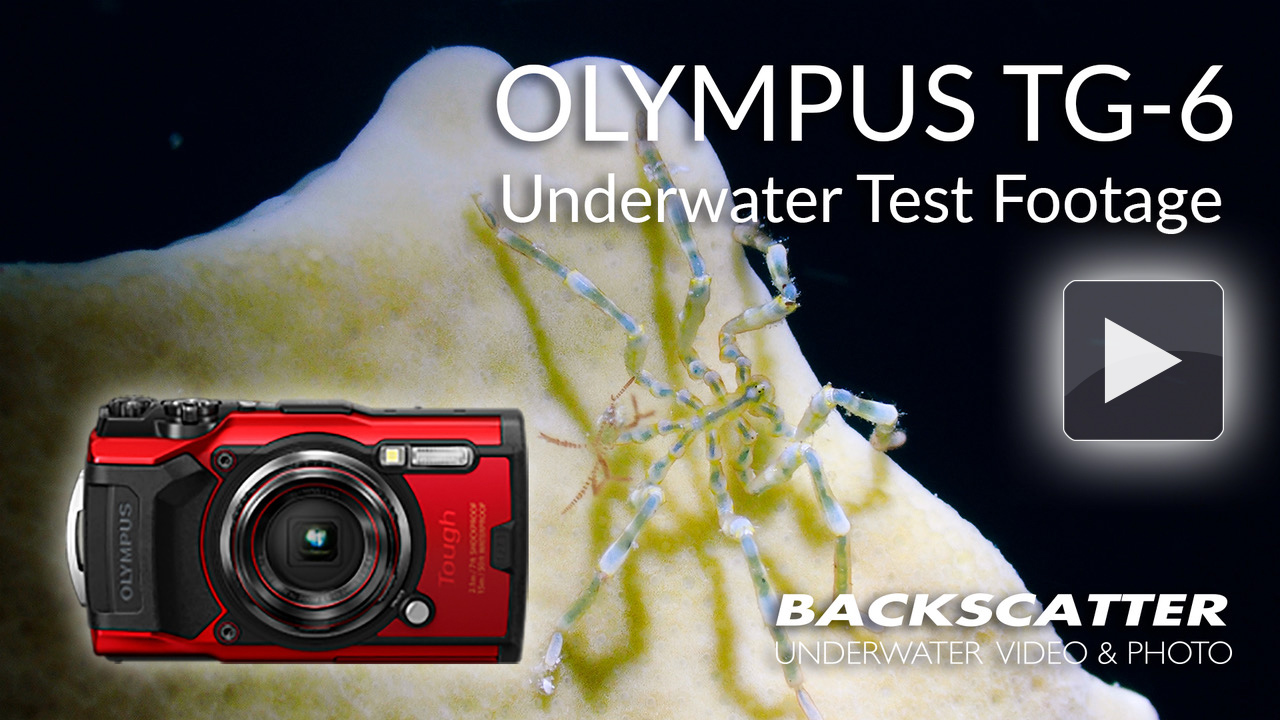
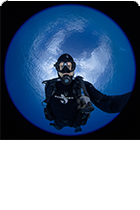 |
Jim Decker CEO: Backscatter Underwater Video & Photo  |
For years, the TG series of cameras from Olympus have been known for producing the best and easiest to shoot macro out of any compact camera. The reproduction ratio is the greatest among all compact cameras, and it also has the fastest and most accurate macro focus of just about ANY camera, including most SLR and mirrorless cameras.
While I've shot the TG-6 with macro in our home waters of Monterey, I was really looking forward to getting to do some wide angle in the clear waters of Little Cayman. And it certainly didn't disappoint. I spent quite a bit of time shooting the TG6 in wide angle with the Backscatter M52 Wide Angle Lens, which yielded sharp results with a 120 degree angle of coverage. Perfect for the types of subjects we encountered in Little Cayman. The colors look fantastic right out of the camera, with beautiful blue backgrounds.
A great new capability for the TG6, especially for wide angle, is to shoot faster shutter speeds than previous TG models would allow. Previous TG models would slow to 1/30 for shutter speed when used with a flash, which is way too slow for most underwater wide angle shooting. Now with the TG6 the user can choose a minimum shutter speed to be used, up to 1/500. The caveat is that the camera must be in Auto ISO. However, the user can also set limits on how high Auto ISO can go, with a maximum upper limit of ISO 400. Being that underwater scenes tend to be a bit dark, the camera will default to ISO 400 pretty much all the time. This makes it easy to dial in strobes manually, and basically gives de facto shutter speed control. A higher shutter speed is essential for freezing motion of faster moving subjects and getting a darker blue background.
One of the little tricks I've come up with is to shoot it in sequential shooting low speed with the flash power set to 1/64 power. This way I can shoot multiple frames while allowing the flash to recycle fast enough to keep up with sequential shooting. I could see the sequential frames on the LCD screen, letting me continue to have a live preview while shooting and getting the heart of the action. This came especially handy for 2 specific shots. Having a high shutter speed to freeze the action and enough sequential frames to capture just the right moment is essential.
First for the stingray shot, it's critical to get just the right moment when it is about to take off from the sand. I continually fired the shutter and got a sequence of shots that I could choose from that had just the right moment.
For the macro blenny shot, I noticed that the blenny would go into its hole, then come out and spit sand out. After seeing the behavior repeat a few times I decided I wanted to try and capture that behavior. With sequential shooting, as soon as I saw the blenny start to come out of the hole, I fired off a bunch of shots, hoping that one would catch the sand being spit out. A lot of sports and wildlife photographers call this technique "spray and pray". Luckily for me, one shot of multiple sequences has the sand captured mid-water.
While the TG6 camera has pretty much the same image quality as the TG5, the secret sauce is the new shutter speed capability that allows for better wide angle backgrounds and freezing of action. Combined with a new capability to shoot super macro in Program and Aperture Priority, these new features make it way easier to take more control over the camera with significant improvements in being able to get the shot.
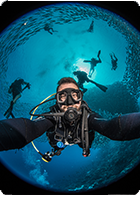 |
ROBIN DODD Producer  |
Olympus has only raised the bar with the latest generation of TOUGH camera. The TG-6 maintains its position as the best choice for shooters that want the simplest yet highest performing point-and-shoot class of camera. The TG-6 is ideal whether you are looking for your first underwater camera system, are just looking for a back-up system to your primary, or if you just need a pocket-sized dedicated macro sidearm system. The camera itself is waterproof to 50ft, so even in the worst-case-scenario of a catastrophic housing flood, the camera will most likely be just fine. While we've loved this line of cameras for multiple generations because of their macro and Microscope Mode abilities, the TG-6 now makes it even easier to shoot the tiniest of the tiny critters out there. A new autofocus mode dedicated to super macro streamlines operation even further because we no longer need to rotate the mode dial to jump between the best underwater settings for both macro and wide angle shooting. We also pick up the benefit of being able to shoot 4K video in super macro, which we've never had before from this camera line. Simply add on a Backscatter M52 Wide Angle or M52 Air Lens to expand the underwater field-of-view and convert this camera into a surprisingly capable wide angle system. For the video enthusiast, the TG-6 captures great underwater color with a manual white balance down to about 50ft, so ambient light video captures will look awesome and require minimal color correction in the editing stage. There's never been a better fit for someone who wants to take their first steps into underwater image making, so pick up a TG-6 and start your journey!
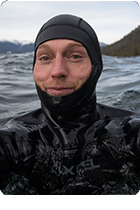 |
DYLAN SILVER Backscatter Team Member  |
We were lucky to have Olympus with their brand new TG-6 at the Digital Shootout. While we were in Little Cayman, this camera was just being released to the public. As huge fans of the Olympus TG-5, we already knew how well the Tough series can perform underwater.
I shot the TG-6 with versatility in mind. I wanted to see how big of a range of subjects I could capture on a single dive. With everything from eagle rays to nudibranchs, Little Cayman is the perfect venue for this. I was able to shoot stingrays gliding over the sand and the intricate cleaner shrimp that hide among sandy rubble.
I found that not having to switch in and out of microscope mode made taking advantage of the camera's versatility that much easier. With a couple button taps and the zoom lever, I could go from shooting subjects the size of a grain of rice to photographing rays, turtles and grouper.
READ MORE GEAR TESTS:










